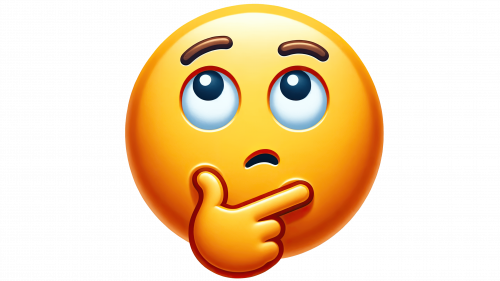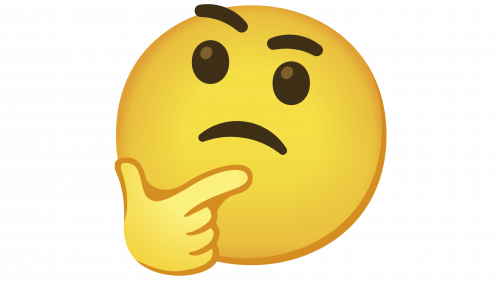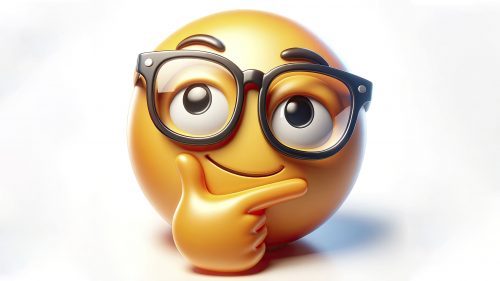The Thinking Emoji is hard to confuse with other emojis. Unlike the super-joyful or negative emotions of most faces, the thoughtful image can be considered low-emotional and neutral. The symbol is quite appropriate in messages to family, friends, or colleagues.
The sign appeared in Unicode 8.0 in 2015. If you don’t have access to the emoji panel, type the following combination on your keyboard: Alt + 129300 – and the picture will appear on the sheet.
The 🤔 emoji, characterized by a hand resting on the chin and a thoughtful expression, symbolizes deep reflection or questioning. It frequently represents a state of pondering, showing curiosity, doubt, or the process of considering various aspects of a situation.
Examples of its use include questioning the reliability of information (“Is this source reliable 🤔?”), weighing lifestyle choices (“Considering going vegan 🤔🌱?”), expressing uncertainty about personal interactions (“Did she appreciate my present 🤔🎁?”), exploring solutions (“Is there a more effective approach 🤔💡?”), and deciding between alternatives (“Which route should we take 🤔🗺️?”). The emoji serves as a digital shorthand for introspection and contemplation in various contexts.
Meaning and use of the Thinking Emoji
The smiley refers us to the works of Rodin, who depicted ancient thinkers pondering philosophical questions of existence. The modern image looks more pragmatic as if a businessman is thinking about the profitability of an enterprise. The symbol has several similar interpretations.
- The person sending the smiley is occupied with their thoughts. Perhaps they are planning for the future or deciding how to conduct a deal. The message says: “I’m thinking.” If the image is a response to your question, then the smiley can be interpreted as: “Let me think.” The respondent will send their answer after contemplating.
- The person is evaluating an item or proposal to determine whether to make a purchase or participate. If you hope to persuade the person to act – it’s time to send a list of rational arguments. The evaluation could concern a relationship issue. The person is examining a potential object to understand whether it is worth their attention.
- The picture embodies a student immersed in solving a task. The image is suitable for themes of study, homework, and professional development.
- The drawing reads with a degree of skepticism. The opponent is not a naive person driven by emotions. In decisions, the writer relies on logic and reason. Your behavior or proposal raises many doubts, as it contains a series of miscalculations and omissions. “This is unlikely,” “And you think this will work?”, “I don’t believe it,” – the message says.
- “I’m ready to listen,” “Yes, this could be interesting; tell me more.” The person is ready to hear your arguments or proposal.
- The image resembles a person who is asking: “Why are you doing this?” “Why did he do that?”.
Thinking Emojis are used together with a light bulb to emphasize enlightenment and searching for an answer. The shrug Emoji next to it indicates that you don’t yet know how to proceed and are thinking about it. A brainy guy or nerd represents a person who is smart and competent in the matter at hand. If next to Thinking Emoji, there is Fire, the message sounds like: “Interesting proposal. Needs some thought”.
Final thoughts
The symbol in a message indicates a problem and the search for its solution. The sender of the image is contemplating how to act correctly. Should they start the venture? They are still doubtful that everything will work out and hope to find or hear compelling arguments. A respondent with such an attitude is not easily deceived. The person won’t be susceptible to manipulation.
It’s appropriate to use the smiley when it comes to serious matters. The symbol is suitable for both men and women. The image lends importance to the message and prompts the reader to delve into what is written.
Put the symbol in a message where you are asking for advice or describing your thoughts: “I’m thinking, should I make potatoes or pasta for dinner?”.
The sign is a gentle way to tell your interlocutor that their proposal is not the best idea. After the Thinking Emoji, you can present your arguments. The picture is an excellent reaction to dubious news. Every day, shocking, often unverified information appears on the internet. And when someone from your acquaintances rushes to impress you, passing on gossip from the yellow press, the Emoji shows your prudence and justified doubts.
If you think that the person is deceiving you, the Thinking Emoji, without harsh words or accusations, shows that you don’t believe them.






